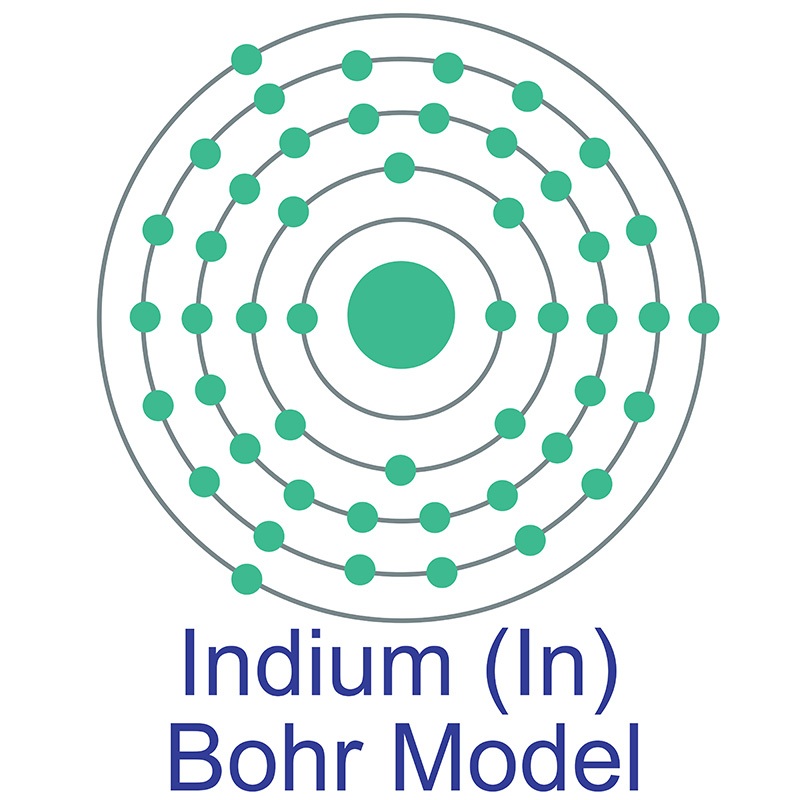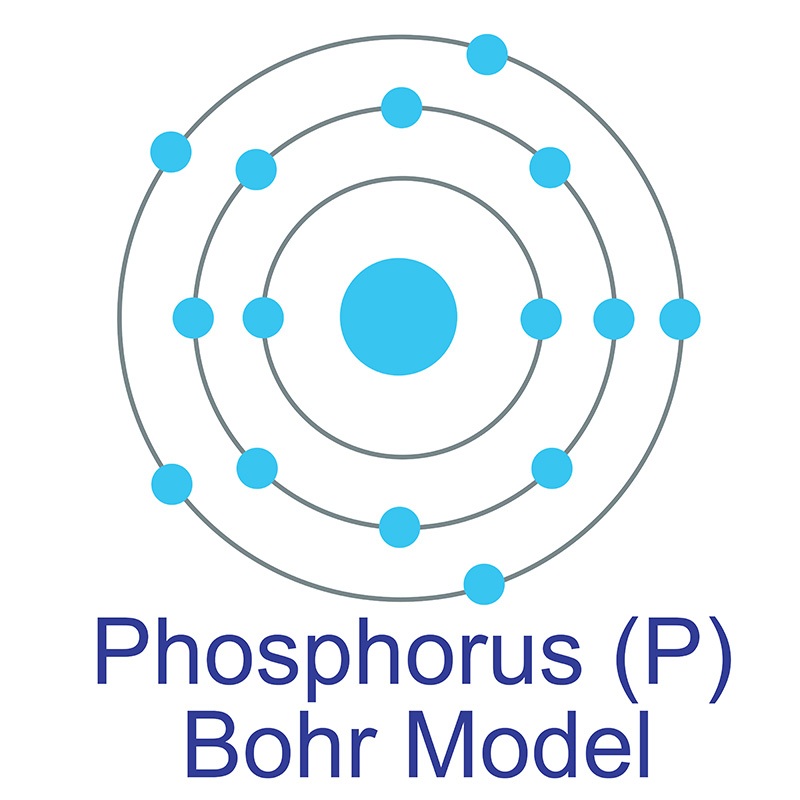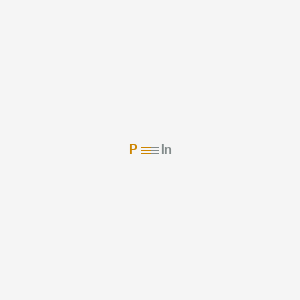SECTION 1. IDENTIFICATION
Product Name: Indium Phosphide
Product Number: All applicable American Elements product codes, e.g. IN-P-05-I
, IN-P-05-L
, IN-P-05-P
, IN-P-05-ST
, IN-P-05-WF
CAS #: 22398-80-7
Relevant identified uses of the substance: Scientific research and development
Supplier details:
American Elements
10884 Weyburn Ave.
Los Angeles, CA 90024
Tel: +1 310-208-0551
Fax: +1 310-208-0351
Emergency telephone number:
Domestic, North America: +1 800-424-9300
International: +1 703-527-3887
SECTION 2. HAZARDS IDENTIFICATION
Classification of the substance or mixture in accordance with 29 CFR 1910 (OSHA HCS)
GHS08 Health hazard
Carc. 2 H351 Suspected of causing cancer.
Hazards not otherwise classified
No data available
GHS label elements
GHS label elements, including precautionary statements
Hazard pictograms

GHS08
Signal word
Warning
Hazard statements
H351 Suspected of causing cancer.
Precautionary statements
P281 Use personal protective equipment as required.
P201 Obtain special instructions before use.
P202 Do not handle until all safety precautions have been read and understood.
P308+P313 IF exposed or concerned: Get medical advice/attention.
P405 Store locked up.
P501 Dispose of contents/container in accordance with local/regional/
national/international regulations.
WHMIS classification
D2A - Very toxic material causing other toxic effects
Classification system
HMIS ratings (scale 0-4)
(Hazardous Materials Identification System)
HEALTH
FIRE
REACTIVITY
1
0
1
Health (acute effects) = 1
Flammability = 0
Physical Hazard = 1
Other hazards
Results of PBT and vPvB assessment
PBT:
N/A
vPvB:
N/A
SECTION 3. COMPOSITION/INFORMATION ON INGREDIENTS
Substances
CAS No. / Substance Name:
22398-80-7 Indium(III) phosphide
Identification number(s):
EC number:
244-959-5
SECTION 4. FIRST AID MEASURES
Description of first aid measures
If inhaled:
Supply patient with fresh air. If not breathing, provide artificial respiration. Keep patient warm.
Seek immediate medical advice.
In case of skin contact:
Immediately wash with soap and water; rinse thoroughly.
Seek immediate medical advice.
In case of eye contact:
Rinse opened eye for several minutes under running water. Consult a physician.
If swallowed:
Seek medical treatment.
Information for doctor
Most important symptoms and effects, both acute and delayed
No data available
Indication of any immediate medical attention and special treatment needed
No data available
SECTION 5. FIREFIGHTING MEASURES
Extinguishing media
Suitable extinguishing agents
Product is not flammable. Use fire-fighting measures that suit the surrounding fire.
Special hazards arising from the substance or mixture
If this product is involved in a fire, the following can be released:
Phosphorus oxides
Metal oxide fume
Advice for firefighters
Protective equipment:
Wear self-contained respirator.
Wear fully protective impervious suit.
SECTION 6. ACCIDENTAL RELEASE MEASURES
Personal precautions, protective equipment and emergency procedures
Use personal protective equipment. Keep unprotected persons away.
Ensure adequate ventilation
Environmental precautions:
Do not allow material to be released to the environment without official permits.
Methods and materials for containment and cleanup:
Dispose of contaminated material as waste according to section 13.
Prevention of secondary hazards:
No special measures required.
Reference to other sections
See Section 7 for information on safe handling
See Section 8 for information on personal protection equipment.
See Section 13 for disposal information.
SECTION 7. HANDLING AND STORAGE
Handling
Precautions for safe handling
Keep container tightly sealed.
Store in cool, dry place in tightly closed containers.
Ensure good ventilation at the workplace.
Information about protection against explosions and fires:
The product is not flammable
Conditions for safe storage, including any incompatibilities
Requirements to be met by storerooms and receptacles:
No special requirements.
Information about storage in one common storage facility:
Store away from oxidizing agents.
Further information about storage conditions:
Keep container tightly sealed.
Store in cool, dry conditions in well-sealed containers.
Specific end use(s)
No data available
SECTION 8. EXPOSURE CONTROLS/PERSONAL PROTECTION
Additional information about design of technical systems:
Properly operating chemical fume hood designed for hazardous chemicals and having an average face velocity of at least 100 feet per minute.
Control parameters
Components with limit values that require monitoring at the workplace:
Indium and compounds
mg/m3
ACGIH TLV 0.1(In)
Belgium TWA 0.1
Denmark TWA 0.1(In)
Finland TWA 0.1
Korea TLV 0.1(In)
Netherlands MAC-TGG 0.1
Norway TWA 0.1
Switzerland MAK-W 0.1
United Kingdom TWA 0.1(In); 0.3(In)-STEL
USA PEL 0.1(In)
Additional information:
No data
Exposure controls
Personal protective equipment
Follow typical protective and hygienic practices for handling chemicals.
Keep away from foodstuffs, beverages and feed.
Remove all soiled and contaminated clothing immediately.
Wash hands before breaks and at the end of work.
Maintain an ergonomically appropriate working environment.
Breathing equipment:
Use suitable respirator when high concentrations are present.
Protection of hands:
Impervious gloves
Inspect gloves prior to use.
Suitability of gloves should be determined both by material and quality, the latter of which may vary by manufacturer.
Penetration time of glove material (in minutes)
No data available
Eye protection:
Safety glasses
Body protection:
Protective work clothing
SECTION 9. PHYSICAL AND CHEMICAL PROPERTIES
Information on basic physical and chemical properties
Appearance:
Form: Powder, pieces, or solid in various forms
Color: Dark grey
Odor: No data available
Odor threshold: No data available.
pH: N/A
Melting point/Melting range: 1070 °C (1958 °F)
Boiling point/Boiling range: No data available
Sublimation temperature / start: No data available
Flash point: N/A
Flammability (solid, gas)
No data available.
Ignition temperature: No data available
Decomposition temperature: No data available
Autoignition: No data available.
Danger of explosion: Product does not present an explosion hazard.
Explosion limits:
Lower: No data available
Upper: No data available
Vapor pressure: N/A
Density at 20 °C (68 °F): 4.79 g/cm3 (39.973 lbs/gal)
Relative density
No data available.
Vapor density
N/A
Evaporation rate
N/A
Solubility in Water (H2O): Insoluble
Partition coefficient (n-octanol/water): No data available.
Viscosity:
Dynamic: N/A
Kinematic: N/A
Other information
No data available
SECTION 10. STABILITY AND REACTIVITY
Reactivity
No data available
Chemical stability
Stable under recommended storage conditions.
Thermal decomposition / conditions to be avoided:
Decomposition will not occur if used and stored according to specifications.
Possibility of hazardous reactions
No dangerous reactions known
Conditions to avoid
No data available
Incompatible materials:
Oxidizing agents
Hazardous decomposition products:
Phosphorus oxides (e.g. P2O5)
Metal oxide fume
SECTION 11. TOXICOLOGICAL INFORMATION
Information on toxicological effects
Acute toxicity:
No effects known.
LD/LC50 values that are relevant for classification:
No data
Skin irritation or corrosion:
Powder: irritant effect
Eye irritation or corrosion:
Powder: irritant effect
Sensitization:
No sensitizing effects known.
Germ cell mutagenicity:
No effects known.
Carcinogenicity:
Suspected of causing cancer.
Reproductive toxicity:
No effects known.
Specific target organ system toxicity - repeated exposure:
No effects known.
Specific target organ system toxicity - single exposure:
No effects known.
Aspiration hazard:
No effects known.
Other information (about experimental toxicology):
Reproductive effects have been observed on tests with laboratory animals.
Subacute to chronic toxicity:
Exposure to indium compounds may cause pain in the joints and bones, tooth decay, nervous and gastrointestinal disorders, heart pain and general debility.
Experiments with animals also indicate that indium may cause reduced food and water consumption with weight loss, pulmonary edema, pneumonia, blood, liver and
kidney damage, leg paralysis and damage to the brain, heart, adrenals and spleen.
Inorganic phosphorus compounds may cause irritation and hemorrhages in the stomach as
well as liver and kidney damage. Bone structure may be attacked, especially the jaw and teeth.
Subacute to chronic toxicity:
The Registry of Toxic Effects of Chemical Substances (RTECS) reports the following effects in laboratory animals:
Lungs, Thorax, or Respiration - other changes.
Lungs, Thorax, or Respiration - fibrosis (interstitial)
Lungs, Thorax, or Respiration - tumors.
Lung, Thorax, or Respiration - changes in lung weight.
Endocrine - changes in spleen weight.
Blood - changes in other cell count (unspecified)
Blood - changes in serum composition (e.g. TP, bilirubin, cholesterol).
Biochemical - Enzyme inhibition, induction, or change in blood or tissue levels - dehydrogenases.
Biochemical - Metabolism (Intermediary) - effect on inflammation or mediation of inflammation
Reproductive - Paternal Effects - testes, epididymis, sperm duct.
Reproductive - Paternal Effects - prostate, seminal vesicle, Cowper's gland, accessory glands.
Additional toxicological information:
To the best of our knowledge the acute and chronic toxicity of this substance is not fully known.
SECTION 12. ECOLOGICAL INFORMATION
Toxicity
Aquatic toxicity:
No data available
Persistence and degradability
No data available
Bioaccumulative potential
No data available
Mobility in soil
No data available
Additional ecological information:
Do not allow material to be released to the environment without official permits.
Do not allow undiluted product or large quantities to reach groundwater, water courses, or sewage systems.
Avoid transfer into the environment.
Results of PBT and vPvB assessment
PBT:
N/A
vPvB:
N/A
Other adverse effects
No data available
SECTION 13. DISPOSAL CONSIDERATIONS
Waste treatment methods
Recommendation
Consult official regulations to ensure proper disposal.
Uncleaned packagings:
Recommendation:
Disposal must be made according to official regulations.
SECTION 14. TRANSPORT INFORMATION
Not a hazardous material for transportation.
UN-Number
DOT, IMDG, IATA
None
UN proper shipping name
DOT, IMDG, IATA
None
Transport hazard class(es)
DOT, ADR, IMDG, IATA
Class
None
Packing group
DOT, IMDG, IATA
None
Environmental hazards:
N/A
Special precautions for user
N/A
Transport in bulk according to Annex II of MARPOL73/78 and the IBC Code
N/A
Transport/Additional information:
Not dangerous according to
the above specifications.
DOT
Marine Pollutant (DOT):
No
SECTION 15. REGULATORY INFORMATION
Safety, health and environmental regulations/legislation specific for the substance or mixture
GHS GHS label elements, including precautionary statements
Hazard pictograms
GHS08
Signal word
Warning
Hazard statements
H351 Suspected of causing cancer.
Precautionary statements
P281 Use personal protective equipment as required.
P201 Obtain special instructions before use.
P202 Do not handle until all safety precautions have been read and understood.
P308+P313 IF exposed or concerned: Get medical advice/attention.
P405 Store locked up.
P501 Dispose of contents/container in accordance with local/regional/
national/international regulations.
National regulations
All components of this product are listed in the U.S. Environmental Protection Agency Toxic Substances Control Act Chemical substance Inventory.
All components of this product are listed on the Canadian Non-Domestic Substances List (NDSL).
SARA Section 313 (specific toxic chemical listings)
Substance is not listed.
California Proposition 65
Prop 65 - Chemicals known to cause cancer
22398-80-7 Indium(III) phosphide
Prop 65 - Developmental toxicity
Substance is not listed.
Prop 65 - Developmental toxicity, female
Substance is not listed.
Prop 65 - Developmental toxicity, male
Substance is not listed.
Information about limitation of use:
For use only by technically qualified individuals.
Other regulations, limitations and prohibitive regulations
Substance of Very High Concern (SVHC) according to the REACH Regulations (EC) No. 1907/2006.
Substance is not listed.
The conditions of restrictions according to Article 67 and Annex XVII of the Regulation (EC) No 1907/2006 (REACH) for the manufacturing, placing on the market and use must be observed.
Substance is not listed.
Annex XIV of the REACH Regulations (requiring Authorisation for use)
Substance is not listed.
Chemical safety assessment:
A Chemical Safety Assessment has not been carried out.
SECTION 16. OTHER INFORMATION
Safety Data Sheet according to Regulation (EC) No. 1907/2006 (REACH). The above information is believed to be correct but does not purport to be all inclusive and shall be used only as a guide. The information in this document is based on the present state of our knowledge and is applicable to the product with regard to appropriate safety precautions. It does not represent any guarantee of the properties of the product. American Elements shall not be held liable for any damage resulting from handling or from contact with the above product. See reverse side of invoice or packing slip for additional terms and conditions of sale. COPYRIGHT 1997-2022 AMERICAN ELEMENTS. LICENSED GRANTED TO MAKE UNLIMITED PAPER COPIES FOR INTERNAL USE ONLY.
 It is a relatively rare, extremely soft metal is a lustrous silvery gray and is both malleable and easily fusible. It has similar chemical properties to
It is a relatively rare, extremely soft metal is a lustrous silvery gray and is both malleable and easily fusible. It has similar chemical properties to  gallium such as a low melting point and the ability to wet glass. Fields such as optics and microelectronics that utilize semiconductor technology have wide uses for indium, especially in the form of Indiun Tin Oxide (ITO). Thin films of Copper Indium Gallium Selenide (CIGS) are used in high-performing solar cells. Indium's name is derived from the Latin word indicum, meaning violet.
gallium such as a low melting point and the ability to wet glass. Fields such as optics and microelectronics that utilize semiconductor technology have wide uses for indium, especially in the form of Indiun Tin Oxide (ITO). Thin films of Copper Indium Gallium Selenide (CIGS) are used in high-performing solar cells. Indium's name is derived from the Latin word indicum, meaning violet. See more Phosphorus products.
See more Phosphorus products.
